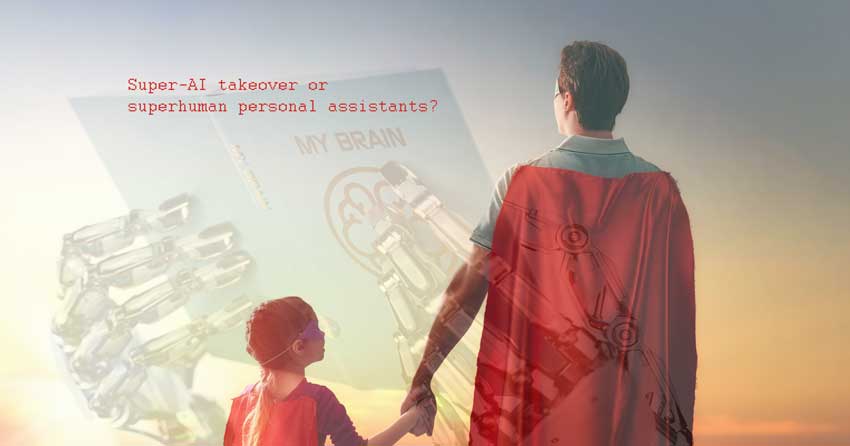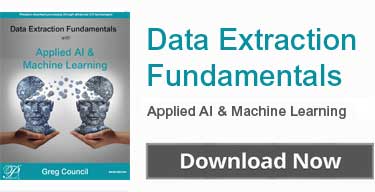Artificial intelligence will outperform humans for almost all well-defined tasks in 45 years—at least, there’s a 50 percent chance of this becoming our future, according to a survey of 352 AI experts surveyed by the University of Oxford and Yale University. In far less time, AI conversational language translation and autonomous vehicles are projected to be the norm, followed closely by “advancements” such as human genre fiction authors becoming obsolete and standard surgical operations being fully automated.
If you listen to interviews with many of the great thinkers of our time (e.g., Stephen Hawking, Elon Musk, Google’s Peter Norvig, Professor Stuart J. Russell and other AI experts), there’s ample reason for concern. When we delve deeper than the AI takeover headlines and scary, eye-catching, highly quotable quotes, we find a consistent call for measured responses to ensure that controls are in place for AI and its machine learning technologies.
This requires developing the necessary verification, validation, security, controls and privacy protection policies alongside our AI advancements. Our laws, regulations, compliance rules and their enforcement typically lag far behind technology innovation. In this case, as with biotech, we cannot afford to fall far behind. Most likely, just about everyone agrees on that.
Insights on AI and Smartness
A closer look at artificial intelligence as a simple to advanced task-replacer reveals that AI today is highly constrained and applied in its actual smarts. Only since robust, inexpensive parallel processing and volumes of data being stored and accessible have we seen AI applications developed in every field across industries. AI needs processing power and volumes upon volumes of ground truth data (large sets of test data with known, actual values) to accurately automate specific actions, procedures or tasks. Currently, the activities that can be successfully completed by AI must be well formalized.
Fortunately for us, this makes humans necessary. Humans and advanced AI may both have complex neural networks. Humans may lack the extensive memory and data crunching of AI, but the human brain builds complex models of the world based on experience and understanding. Decisions are made from these models that have emotional and physical context, work and life experience. These can be extremely nuanced and form connections that allow for both innovation and creativity. Humans have intuition.
When a surgeon is presented with a complication during surgery, for example, which is unexpected and not accounted for in published databases, but happens to correlate to what the surgeon has seen in her prior experience, her unorthodox surgical actions—based on her accumulated experience and resulting intuition—may save the patient’s life. AI doesn’t operate well with concepts or build models of the world, it relies on specific scenarios and possible outcomes. It’s entirely quantitative training with statistical results. There is no intuition.
Rethinking Progress, Redefining Intelligence
Because of AI’s nature, AI is most likely to play a critical role as automated assistants or enhancers to—rather than overlords of—our intellects. AI stands a much greater chance of adding further context to our models of the world. Search engines at a very elementary level have already transformed how we answer our questions and find information in our daily decision making.
We see this in our area of expertise. Parascript AI machine learning software automatically classifies images, locates, extracts and verifies data. This extracted information can range from transaction data (e.g., invoices, receipts, checks and remittances), form data (e.g., loan applications or any machine-print and handwritten forms) to signature verification to early identification of suspicious areas for cancer on a mammogram.
Mapping Real World Tasks
All of these data handling tasks—even though varied and sometimes highly complex—are formalized activities that can be completed with extreme proficiency after training the software on representative data sets to achieve the kind of high quality results that our customers require. Specific rote data entry tasks such as double (or triple) keying can be automated with higher accuracy rates for any given data stream, and the extracted data is workflow ready. Only a small portion of the data that requires human experience and intuition is left for additional verification.
Double key verification is commonly used in data entry when the accuracy level of the final information requires in excess of 95 percent field-level accuracy; it is simply the process of having two data entry operators key the same data, which is then compared. AI never tires, can operate 24/7 and is always consistent in its output. So, while specific repetitive tasks can be automated so that employees are freed to do more complex tasks and deliver more personalized customer service, AI’s greatest promise lies in becoming our advanced assistants.
Multidimensional Enhanced Human Intelligence
Today, our software assists people from insurance operations teams, Accounts Payable teams, loan applications officers, governmental agencies to radiologists in processing large volumes of data more efficiently with extreme precision without requiring them to do so many manual tasks. Take diagnostic mammography screening, leveraging AI for early detection of breast cancer provides the radiologist with additional information about suspicious areas. This added data, combined with the radiologist’s experience and knowledge of the patient’s personal and family history, determines if further diagnostics are necessary.
Certainly, these teams now have more time to do the higher level decision making and analytical activities that come naturally to humans. To fine-tune machine learning requires human subject matter experts (SMEs) who understand the larger workflow process down to the details and can provide AI with the necessary context.
If you found this article interesting, you might find this eBook useful:





